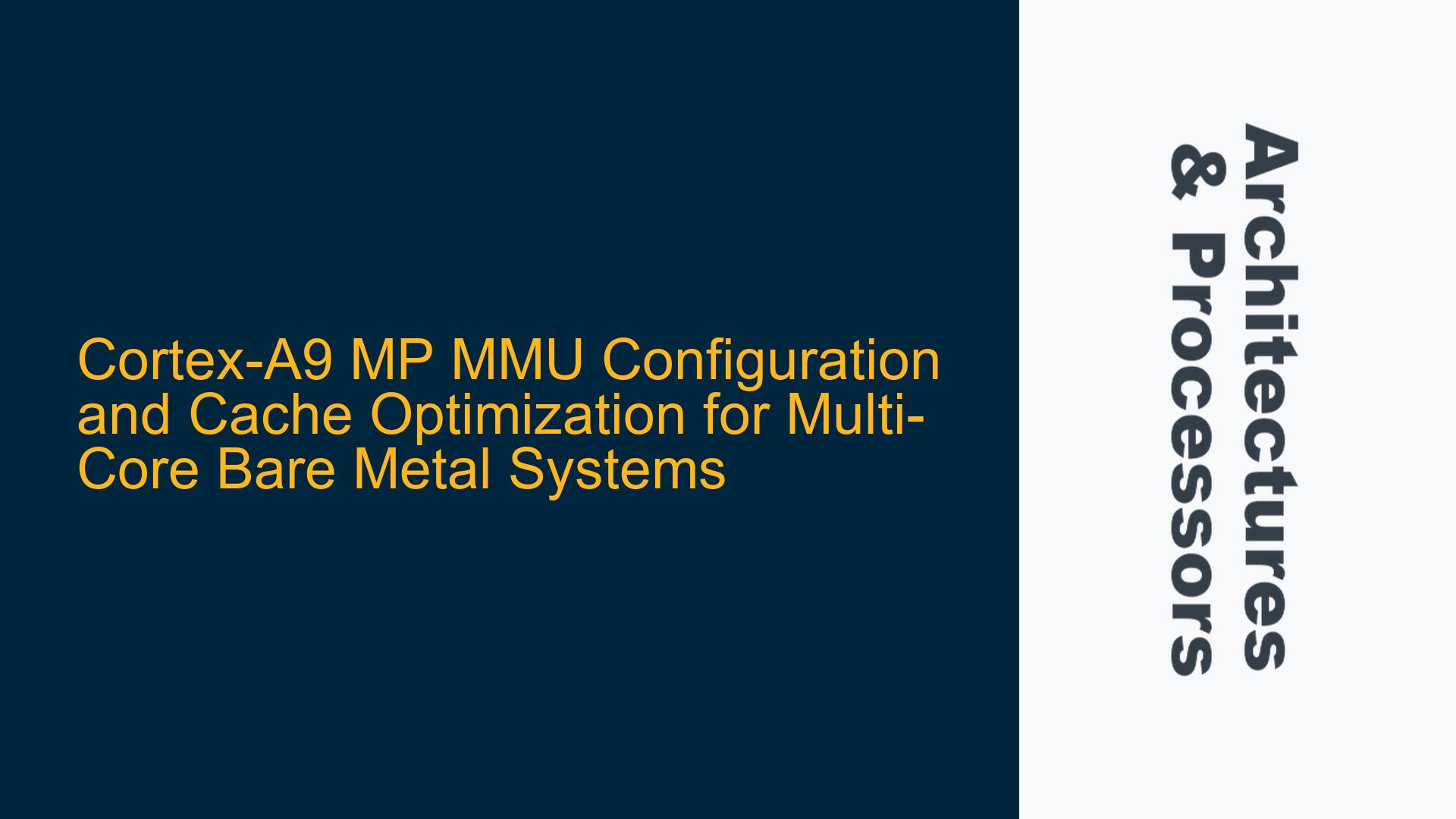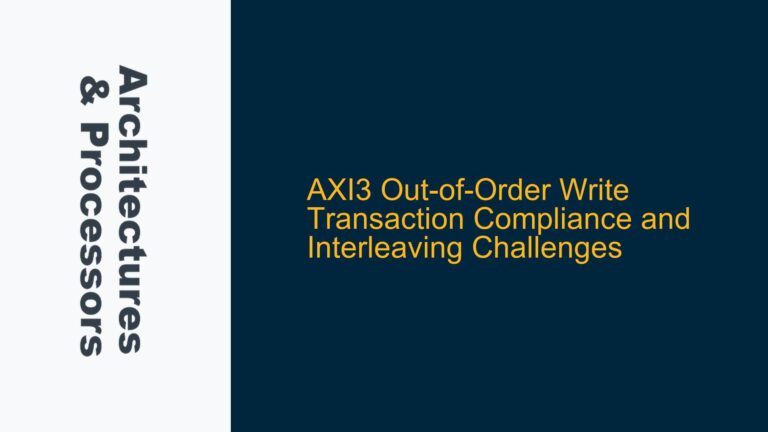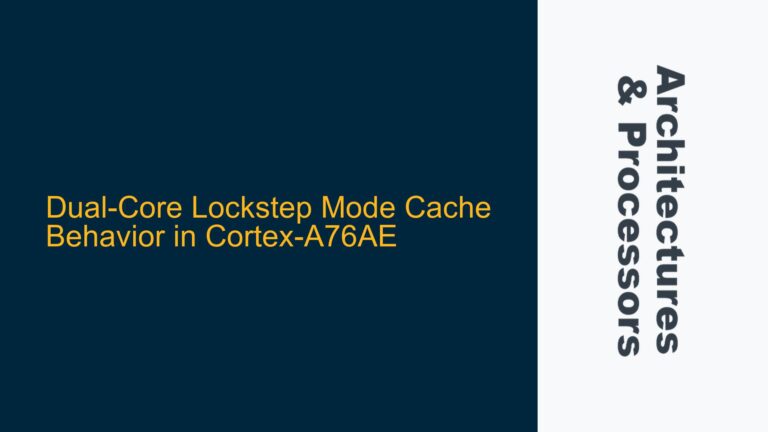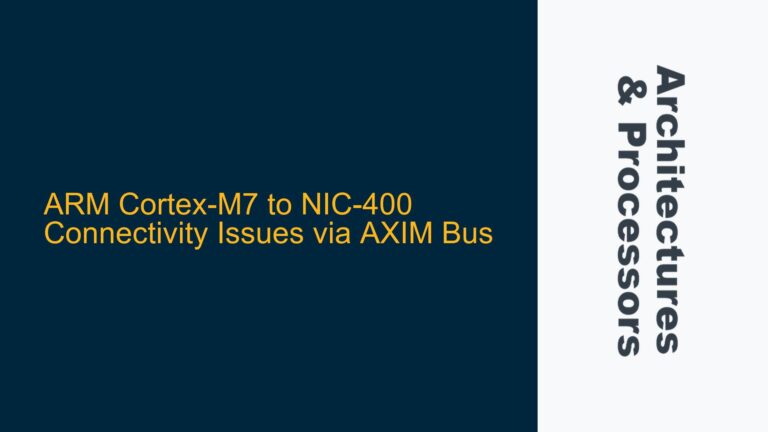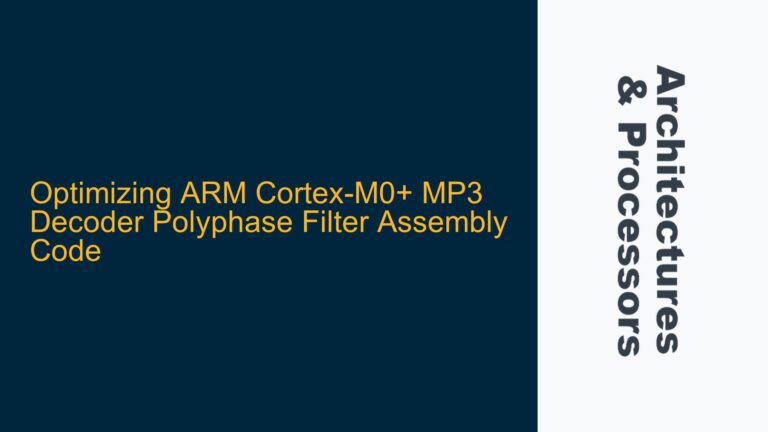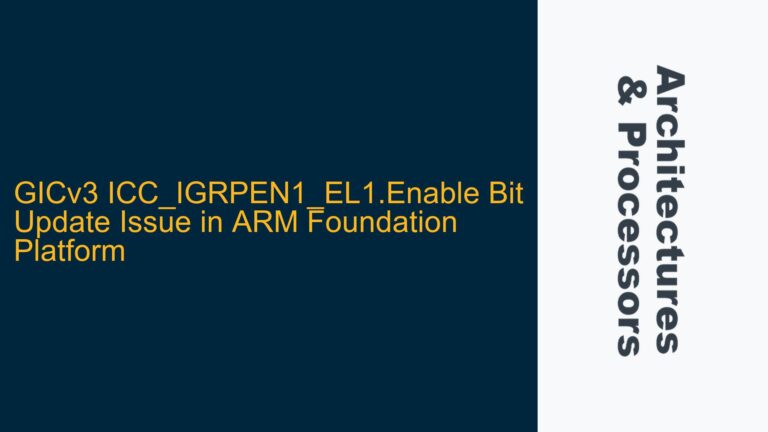Cortex-A9 MP MMU Setup and Cache Configuration Challenges in Multi-Core Systems
When working with the Cortex-A9 MP processor in a bare metal environment, particularly in multi-core configurations, setting up the Memory Management Unit (MMU) and optimizing cache behavior are critical tasks. The Cortex-A9 MP core, as used in the NXP/Freescale iMX6Q, introduces several complexities due to its multi-core architecture, shared memory regions, and cache coherency requirements. This post delves into the specific challenges of configuring the MMU, cache, and memory attributes for a dual-core system where one core is responsible for data collection and the other for data display. The discussion focuses on the implications of setting the SMP bit, cache prefetch, and memory attributes, as well as the trade-offs between DMA and NEON for large memory copies.
SMP Bit Configuration and Memory Attribute Considerations
The Cortex-A9 MP core supports Symmetric Multiprocessing (SMP), which allows multiple cores to operate concurrently while maintaining cache coherency and memory consistency. The SMP bit in the Auxiliary Control Register (ACTLR) plays a pivotal role in enabling or disabling SMP features. When using multiple cores, even if they do not directly interact, setting the SMP bit is generally recommended. This ensures that the cache coherency mechanisms are active, preventing inconsistencies in shared memory regions.
The SMP bit works in conjunction with the Shareable memory attribute, which determines whether a memory region is visible to all cores. For the shared OCRAM region in the described system, setting the memory as STRONGLY_ORDERED is appropriate to ensure strict ordering of memory accesses. However, it is important to note that STRONGLY_ORDERED memory is inherently shareable and does not require explicit setting of the shareable bit. The Read-Write (RW) access bits should still be configured to enforce access permissions.
The Fast Walk (FW) bit, also in the ACTLR, can be enabled to accelerate page table walks. While this improves performance, it may increase power consumption. For systems where power efficiency is critical, the FW bit should be evaluated carefully. In most cases, enabling the FW bit is beneficial for performance without significant downsides.
Cache Prefetch and Allocation Policies for Large Memory Copies
The Cortex-A9 MP core provides several cache configuration options that can significantly impact performance, particularly for large memory operations such as frame buffer copies. The L1 Data Cache Prefetch bit, when enabled, allows the processor to speculatively fetch data into the cache before it is explicitly requested. This can improve performance for sequential memory accesses, such as those occurring during frame buffer copies. However, prefetching can also lead to cache pollution if the prefetched data is not used, potentially degrading performance for non-sequential access patterns.
The "Alloc in One Way" bit is another critical configuration option. When enabled, this bit restricts cache allocation to one way of the set-associative cache, effectively reducing cache contention. For large memory copies, such as the 1.5MB frame buffer operations described, enabling this bit during the copy operation can improve performance by minimizing cache thrashing. However, it should be disabled during normal operation to allow full utilization of the cache.
The choice between using memory-to-memory DMA or NEON for large copies depends on the specific requirements of the system. DMA offloads the copy operation from the CPU, freeing up cycles for other tasks. However, DMA requires careful management of cache coherency, particularly if the source and destination regions are cached. NEON, on the other hand, leverages the processor’s SIMD capabilities to perform high-speed memory copies but consumes CPU cycles. For systems where CPU utilization is a concern, DMA is generally preferred. However, if the CPU is underutilized, NEON can provide comparable performance with simpler implementation.
Memory Type and Cache Policy Trade-Offs for DRAM and Frame Buffer
The choice of memory type and cache policy is crucial for optimizing performance in a Cortex-A9 MP system. For DRAM, using Write-Back (WB) caching is generally preferred over Write-Through (WT) due to its higher performance. Write-Back caching reduces memory bandwidth by deferring writes to memory until the cache line is evicted, whereas Write-Through immediately writes data to memory, increasing bandwidth usage. However, Write-Back caching requires careful management of cache coherency, particularly in multi-core systems.
For the frame buffer, the decision to cache or not cache the memory region depends on the access patterns and performance requirements. As noted in the discussion, uncached frame buffer memory can provide higher performance for display operations by avoiding cache overhead. However, if the frame buffer is also accessed by the CPU for other operations, caching may be beneficial. In such cases, using a Write-Combine (WC) memory type can provide a balance between performance and coherency.
The following table summarizes the key configuration options and their implications:
| Configuration Option | Description | Pros | Cons |
|---|---|---|---|
| SMP Bit | Enables SMP features and cache coherency | Ensures coherency in multi-core systems | Slightly increases power consumption |
| FW Bit | Accelerates page table walks | Improves MMU performance | Increases power consumption |
| L1 Data Cache Prefetch | Speculatively fetches data into the cache | Improves performance for sequential accesses | Can cause cache pollution for non-sequential accesses |
| Alloc in One Way | Restricts cache allocation to one way | Reduces cache thrashing for large copies | Limits cache utilization during normal operation |
| Write-Back Caching | Defers writes to memory until cache line eviction | Reduces memory bandwidth usage | Requires careful cache coherency management |
| Uncached Frame Buffer | Avoids caching for display memory | Improves performance for display operations | Reduces performance for CPU accesses |
Implementing and Validating the Configuration
To implement the described configuration, follow these steps:
-
Enable the SMP Bit: Set the SMP bit in the ACTLR to ensure cache coherency across cores. Verify that the shareable attribute is correctly configured for shared memory regions.
-
Configure Memory Attributes: Set the OCRAM region as STRONGLY_ORDERED and ensure that the RW bits are configured appropriately. For DRAM, configure the memory type as Write-Back and enable caching.
-
Optimize Cache Behavior: Enable the L1 Data Cache Prefetch bit if the access pattern is predominantly sequential. Use the "Alloc in One Way" bit during large memory copies to minimize cache thrashing.
-
Choose Copy Mechanism: Evaluate the trade-offs between DMA and NEON for large memory copies. Use DMA for CPU-offloaded operations and NEON for CPU-bound tasks.
-
Validate Performance: Use performance monitoring tools to measure the impact of each configuration option. Adjust the settings based on the observed performance and coherency behavior.
By carefully configuring the MMU, cache, and memory attributes, and validating the performance impact, you can achieve optimal performance and reliability in your Cortex-A9 MP bare metal system.
